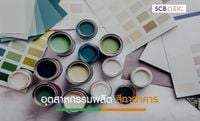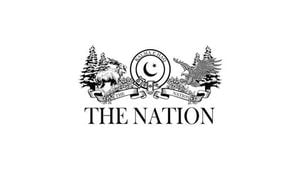In 2025, the Thai paint market is projected to recover, reaching a value of approximately 27.6 billion baht, reflecting a 2.2% year-over-year increase. This growth is primarily driven by ongoing construction and renovation activities in the commercial sector, including retail spaces, office buildings, and hotels. However, the housing market remains a significant challenge, with expectations of continued contraction, which may suppress the initiation of new residential projects.
In light of these dynamics, paint prices are anticipated to decline due to lower raw material costs, influenced by a forecasted decrease in global oil prices. The competitive landscape in the paint market is fierce, necessitating strategic adjustments, particularly in developing environmentally friendly products that prioritize the health of residents. Major paint manufacturers capable of achieving economies of scale will have a competitive edge in pricing and profit margins compared to smaller firms burdened by higher operational costs.
Industry experts suggest that manufacturers should focus on developing value-added products that can command higher prices and margins, targeting the mid-to-upper segment of new residential construction and certified environmentally friendly commercial properties. Currently, around 95% of the Thai paint market's value is attributed to domestic usage, while the remaining 5% is exported primarily to CLMV countries—Cambodia, Laos, Myanmar, and Vietnam.
Key factors influencing the demand for paint include the expansion of the real estate sector, which encompasses both housing projects and commercial developments. Additionally, households are increasingly seeking to renovate and enhance their living spaces. The Thai paint industry comprises eight key players, including both Thai manufacturers and foreign companies operating under renowned international brands. Among publicly listed firms in Thailand are TOA Paint (Thailand) Public Company Limited and Delta Paint Public Company Limited.
The competition in the paint market is intense, particularly between premium and specialty paint segments, such as heat-resistant and anti-fungal paints. These products are priced higher than standard paints and emphasize quality and manufacturing innovation. In contrast, the standard and economy paint markets focus primarily on price competitiveness and value.
Approximately 57% of the production costs for paints are attributed to raw materials, including binding agents and pigments, which are largely sourced from international chemical imports. The prices of these materials typically trend in line with fluctuations in global oil prices. Additionally, energy costs account for about 24% of the production expenses, reflecting the challenges manufacturers face in managing volatile cost structures.
Distribution channels for paint products remain predominantly retail-based, with around 65% of total sales occurring through general construction material retailers that serve as direct representatives for manufacturers. Modern retail outlets contribute approximately 25% to total sales, while other channels, including direct sales to contractors and property developers, account for about 10%, which includes e-commerce sales and exports.
Despite a 6.5% decline in paint prices in 2024 and a 3.6% year-over-year contraction in the market value, the outlook for 2025 suggests a recovery. The anticipated increase in construction projects, particularly in commercial real estate, is expected to bolster paint usage. This includes large mixed-use developments in prime urban locations, office leasing spaces, and renovations of retail areas and hotels.
According to SCB EIC, the paint market value is projected to reach 27.6 billion baht in 2025, closely aligning with the average annual growth rate of 2.9% between 2020 and 2024. Although challenges remain from the housing market contraction, the development of significant commercial projects across various high-potential areas is expected to drive increased paint usage.
Premium-grade paint products, designed to cater to affluent consumers seeking renovations and improvements, will likely benefit from this trend. Additionally, the development of environmentally friendly and health-conscious paint products will enhance competitiveness and market expansion opportunities for paint manufacturers.
The Thai paint industry features numerous players under various brands, competing vigorously on price and product diversity to meet the needs of different customer segments. Larger manufacturers, benefiting from high production volumes and economies of scale, are less affected by cost fluctuations compared to medium and smaller firms, allowing them to maintain better profit margins amid volatile raw material costs.
Furthermore, increasing the proportion of renewable energy in production processes could help reduce energy costs, a significant component of paint manufacturing expenses, thereby sustaining profit margins. The trend towards developing buildings that meet environmental standards, particularly regarding energy conservation, is expected to further boost demand for paints that align with these criteria. This includes heat-reflective paints that lower indoor temperatures, reducing reliance on air conditioning.
Additionally, paints with low volatile organic compounds (VOCs) are essential for achieving green building certifications, such as LEED from the U.S. and TREES in Thailand, which are increasingly sought after by developers.
Overall, the Thai paint industry is poised for a recovery in 2025, driven by the expansion of commercial real estate and the growing demand for environmentally friendly products. As the market adapts to changing consumer preferences and economic conditions, manufacturers are encouraged to innovate and improve their offerings to capture new market opportunities.





